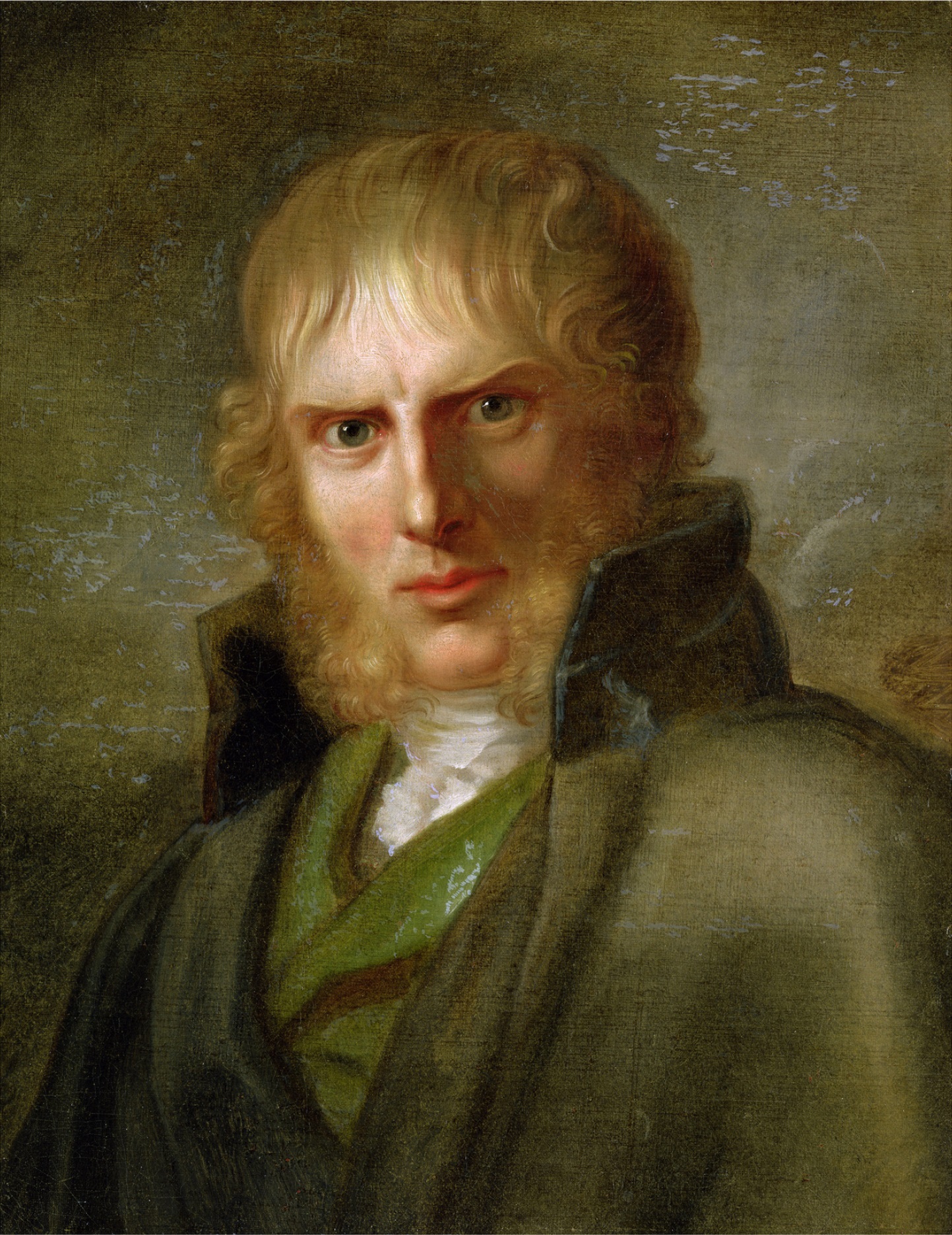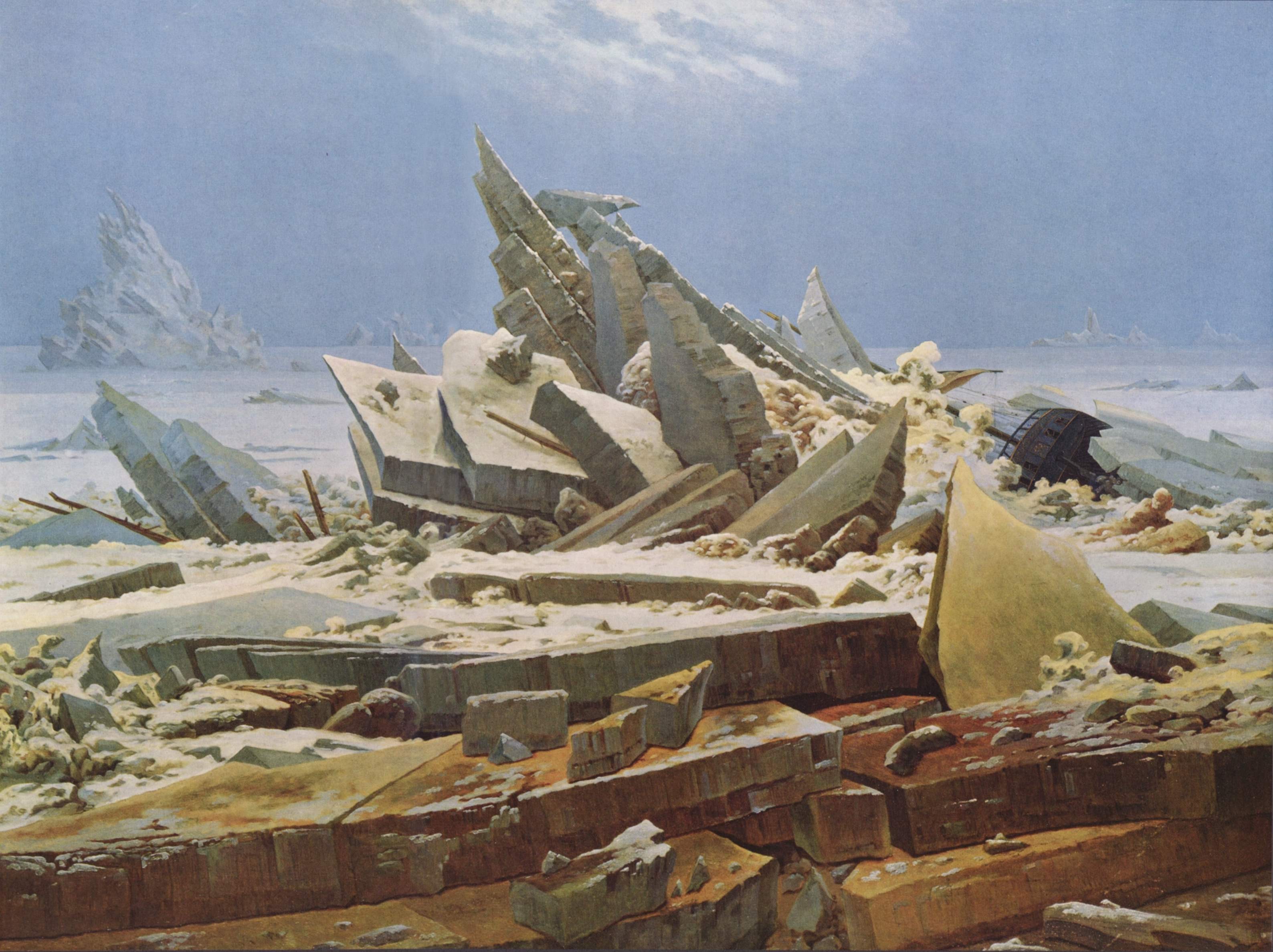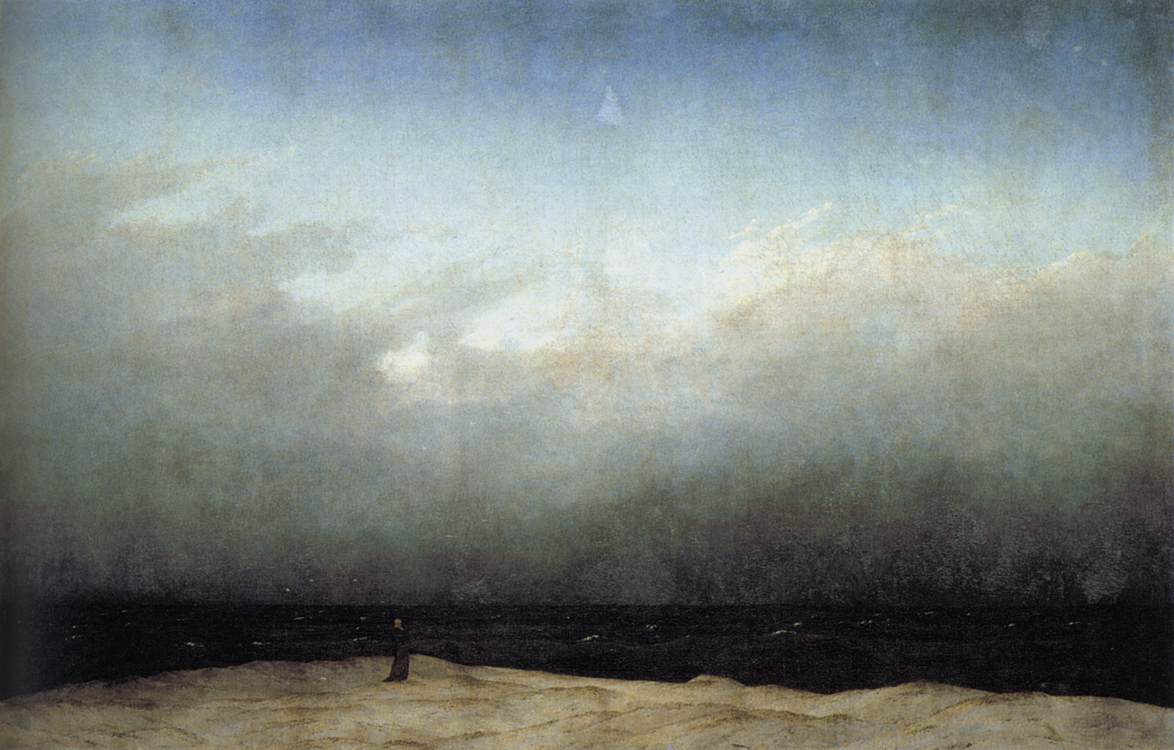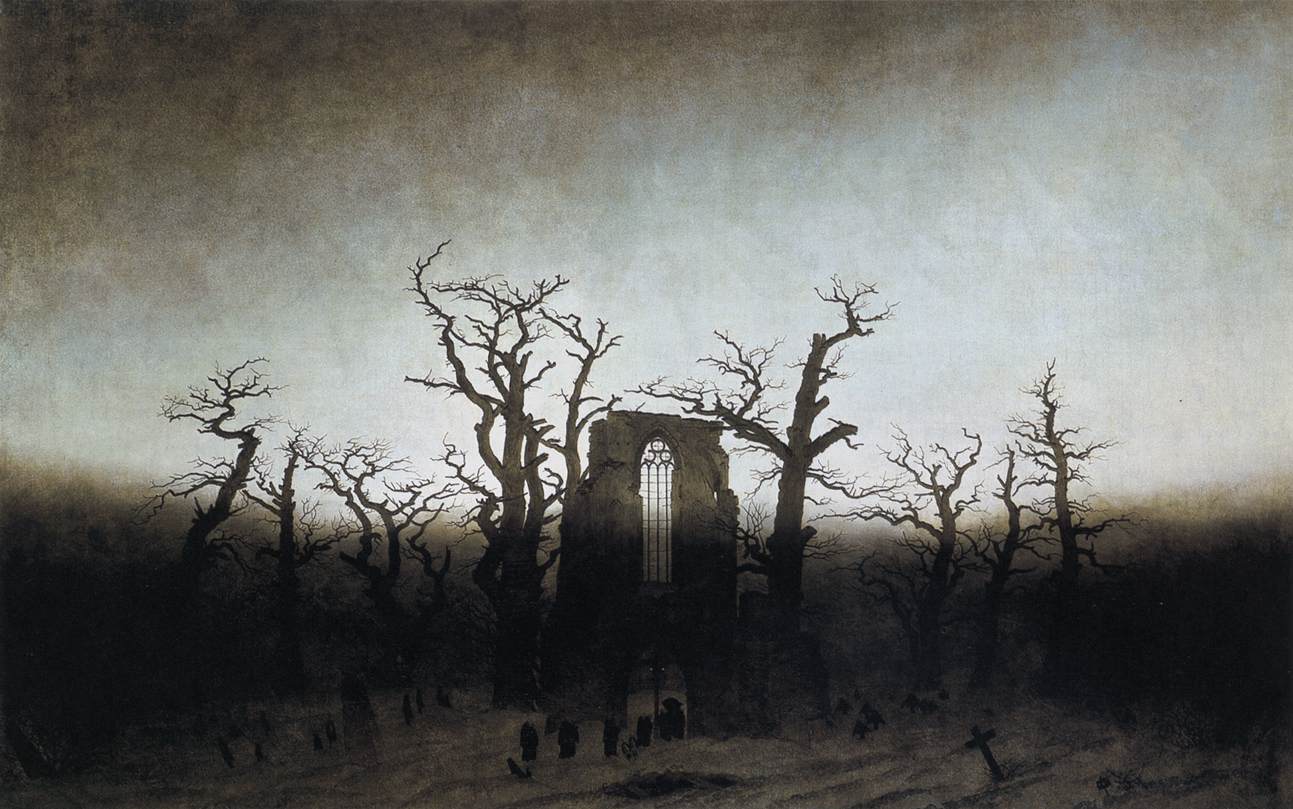INTRODUCTION
You step into the windswept coastal town of Greifswald, Pomerania, on March 5th, 1785. Here, among medieval Gothic buildings, icy moats, and mist-shrouded harbors along the Baltic Sea, you witness the birthplace of one of the greatest German Romantic painters—Caspar David Friedrich.
From the moment you arrive, you feel the haunting beauty of this Hanseatic town seeping into your soul. You understand instantly why it shaped Friedrich’s artistic vision.
As the 18th century draws to a close, you can sense a shift in the air—the Enlightenment’s cold rationality giving way to Romanticism’s passion, emotion, and spiritual yearning. In these stark northern landscapes, where sea legends are told by candlelight, Friedrich’s young life changes forever.
The Tragedy That Shapes His Vision
Imagine you’re a child, skating on a frozen lake near Greifswald. Suddenly, the ice beneath you cracks. Freezing water swallows you whole. That’s exactly what happened to young Caspar. As you struggle to breathe, your older brother, Johann Christoffer, dives in, pulling you to safety. You survive—but Johann doesn’t. His sacrifice imprints itself deep into your heart, and you’ll carry this loss for life.
When you later stand before Friedrich’s paintings—lonely figures against vast seas, ruins in the mist—you’ll feel the weight of that moment. Themes of mortality, solitude, and spiritual redemption aren’t just artistic devices; they’re his lived experience.
Growing Up in Faith and Loss
You grow up in a strict Lutheran Pietist household, where devotion, introspection, and a deep connection to God through nature are everyday truths. But loss keeps visiting.
At just seven, you lose your mother. The following year, your sister Elisabeth dies. Later, your sister Maria succumbs to typhus. Each grief deepens your awareness of life’s fragility—a theme that will later echo through every brushstroke.
Learning to See Nature Differently
As you hone your drawing skills under Johann Gottfried Quistorp at the University of Greifswald, you’re told to sketch directly from nature. This practice changes you. You don’t just look at trees or ruins—you listen to them. You also meet Ludwig Gotthard Kosegarten, a poet-preacher who insists that nature itself is God’s revelation. His words lodge in your soul, guiding the spiritual undercurrent of your art.
Copenhagen: Where Your Vision Expands
At 20, you head to the Royal Danish Academy of Fine Arts in Copenhagen. Here, you study the techniques of Dutch masters, explore Romantic literature, and discover the sublime—the overwhelming beauty and terror of nature that humbles the human spirit. You realize you’re not just a painter; you’re a storyteller of human existence through landscape.
Your Signature: The Rückenfigur
Caspar David Friedrich stands as a towering figure in the German Romantic movement, an artist who transformed the landscape painting genre into a profound vehicle for spiritual and emotional expression. His work transcends a simple depiction of nature; instead, he uses the natural world as a canvas to explore complex themes of spirituality, solitude, and the human relationship with the sublime.
Through his masterful use of symbolic imagery, breathtaking atmospheric effects, and the iconic Rückenfigur, Friedrich invites viewers on an introspective journey into the heart of Romantic ideals.
In works like Wanderer Above the Sea of Fog, you make me face the unknown right alongside you. The mist hides the future, but the light breaking through hints at hope.
A lone hiker dominates the center of the frame, their back to the viewer. Below them stretches an almost impenetrable expanse of fog, swallowing a rugged, rocky landscape. This isn't just a scene; it's a powerful metaphor.
The hiker, poised on the edge of the unknown, embodies the human journey through an uncertain world. The dense, swirling mist symbolizes the mysteries and challenges that lie ahead in life, an ominous, yet perhaps ultimately navigable, path into the unseen future. The solitary figure reminds us that we often face life's vast unknowns alone, confronting what seems an endless, enigmatic journey.
A signature element of Friedrich’s style is the Rückenfigur—a back-facing figure positioned within the landscape. This technique is not a narrative device but a brilliant way to engage the viewer directly. By denying us a view of the figure's face, Friedrich compels us to inhabit their perspective and join them in contemplation. We see the world through their eyes, sharing in their pensive mood and experiencing the scene’s emotional weight firsthand.
The back-facing figure becomes a proxy for the viewer, inviting us to reflect on our own place within the grand, spiritual landscape. This technique transforms the act of viewing from a passive observation into an active, meditative experience, fostering a sense of shared introspection. The figure itself is not a specific individual but a universal stand-in for humanity, making the experience deeply personal while also speaking to a collective human condition.
The Sublime Landscapes of Caspar David Friedrich
Friedrich's art is defined by its ability to evoke the sublime, a feeling of awe and terror in the face of nature’s overwhelming power. This was a core tenet of Romanticism, a direct reaction against the rationalism of the Enlightenment. In iconic works like Wanderer Above the Sea of Fog, the central figure stands on a rocky precipice, gazing upon a chaotic, mist-filled vista. The scene is not a comforting one, but a representation of nature as an immense, untamable force that dwarfs human existence.
Friedrich’s landscapes are also rich with symbolism, each element carefully chosen to convey deeper meaning. The ruins of Gothic cathedrals and ancient oaks often symbolize the transience of life and the enduring power of faith, linking the present to a venerated, spiritual past. Fog and mist are recurring motifs that represent the unknown or the mysterious journey of life, creating a veil between the physical world and the spiritual realm.
In The Sea of Ice, the wreckage of a ship amidst a brutal, frozen landscape speaks to the futility of human ambition against nature's raw power.
The recurring motif of the cross, often a simple, unadorned crucifix on a mountaintop, serves as a direct link between the natural world and the divine, acting as a spiritual anchor in the wild, untamed landscapes. Similarly, the cyclical nature of sunrises and sunsets speaks to themes of hope, death, and resurrection, while small sailing ships on the horizon can symbolize the journey of life or the voyage toward the afterlife.
Through this layered iconography, Friedrich's paintings become more than just beautiful scenes; they are contemplative meditations on the big questions of existence. In essence, Friedrich painted not what he saw, but what he felt, creating a body of work that continues to resonate with its timeless exploration of humanity’s spiritual quest in a vast and beautiful world.
Nature as a Mirror of the Soul
You don’t paint nature as decoration. For you, mountains are altars, forests are cathedrals, and seas are eternal journeys. Light itself becomes a messenger—dawn brings hope, and dusk whispers of endings. Every tree, ruin, path, or distant ship in your paintings speaks in symbols, telling me about life, death, and faith without a single word.
Masterpieces That Pull You In
Standing before Friedrich's Monk by the Sea, you're immediately struck by an overwhelming sense of emptiness.
The vast horizon, a thin line separating a turbulent sea from an oppressive sky, seems to press in on you, creating a palpable feeling of isolation.
The sharp contrast between the viewer's secure position and the vast, uncertain world below creates a powerful emotional tension.
This feeling is further intensified in paintings like Monk by the Sea, where a solitary, minuscule figure is placed against an endless, oppressive expanse of sea and sky. The stark, minimalist composition and the somber color palette force the viewer to confront a profound sense of isolation. These works challenge the viewer to grapple with their own smallness and mortality, finding a spiritual intensity and a sense of existential wonder in the immensity of the natural world.
The lone, diminutive figure of the monk, back to the viewer, emphasizes this profound solitude. It's a powerful depiction of humanity's insignificance against the immensity of nature and, perhaps, the existential void. The painting doesn't just show a scene; it evokes a deep, almost unsettling, feeling of being utterly alone in an infinite, indifferent world.
In The Abbey in the Oakwood, you walk with the mourners through snow toward a ruined church, feeling the chill of both winter and mortality.
Then, in Landscape with Mountain Lake, Morning, you breathe the crisp air and feel the peace of sunlight touching still waters.
You realize Friedrich isn’t always somber—sometimes, he gives you rest.
Decline, Rediscovery, and Legacy
In his later years, Friedrich’s symbolic style falls out of fashion. Realism takes over, and by his death in 1840, the art world has nearly forgotten him. But decades later, Symbolists and modern artists rediscover his genius. Today, his influence runs from German Romanticism straight through to contemporary art. His works still speak to our need for solitude, reflection, and connection with the natural world.
Why His Art Still Speaks to You
When you step into a Friedrich painting, you don’t just see a scene—you enter a conversation with life itself. You’re reminded of your smallness in the universe, yet also of your spiritual depth. You feel the pull between the seen and the unseen, the temporal and the eternal.
Caspar David Friedrich doesn’t simply show you landscapes—he invites you to stand in them, to feel them, to search for meaning in their light and shadow. That’s why his art endures. That’s why, centuries later, you still find yourself in the mist with him.




